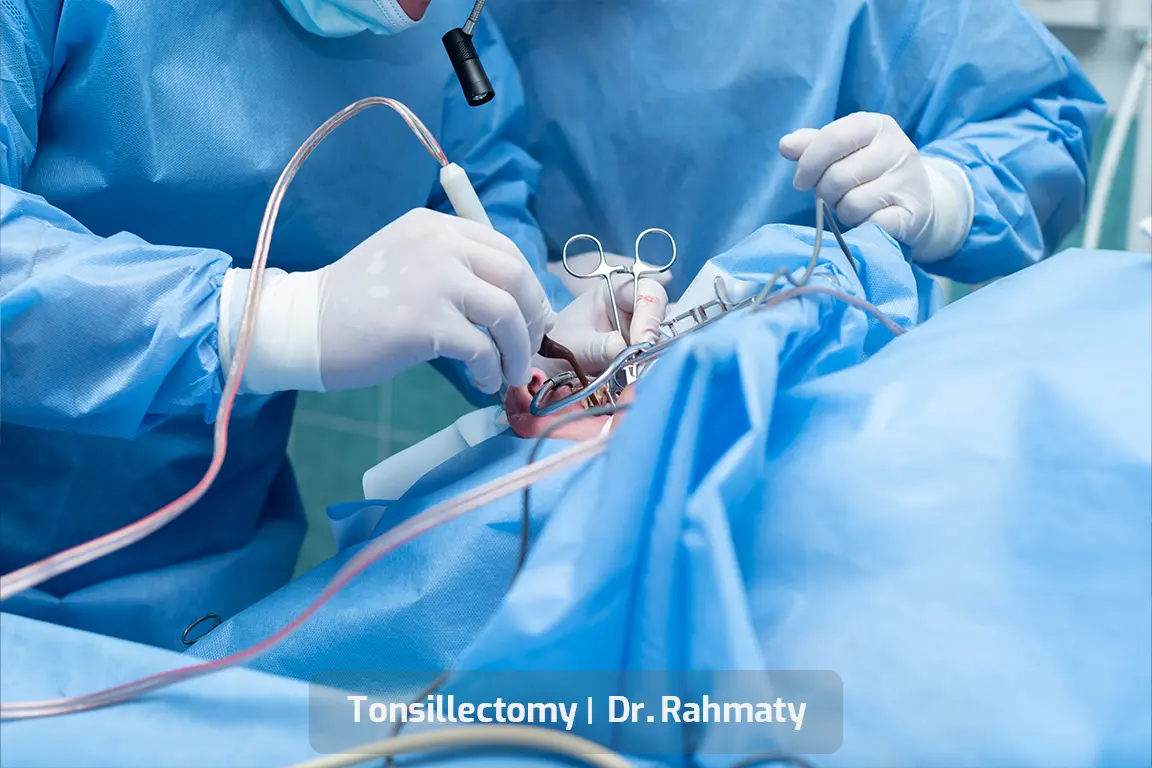Tonsillectomy (Tonsil Surgery)
Tonsils are two smallTonsils are two small lymphoid tissues located at the back of the throat on either side. Their primary function is to protect the body against infections. However, in some cases, they themselves become a source of chronic infection or grow large enough to interfere with breathing or swallowing, requiring surgical removal known as tonsillectomy.
When Is a Tonsillectomy Needed?
A tonsillectomy may be necessary in the following cases:
-
Recurrent tonsillitis (e.g., more than 5–7 times per year)
-
Tonsillar abscess
-
Snoring or obstructive sleep apnea
-
Difficulty swallowing or speaking due to enlarged tonsils
In general, if symptoms such as throat redness, fever, headache, pain while swallowing, loss of appetite, or similar issues are present, it is essential to consult a physician for examination and, if needed, surgical intervention.
How Is a Tonsillectomy Performed?
If a tonsillectomy is recommended by the physician, preliminary steps such as blood tests, physical examination, and review of medical history are required. In addition, the patient may need to stop certain medications under medical supervision to reduce surgical risks.
this surgery is usually performed under general anesthesia, meaning the patient is asleep throughout the procedure. The surgeon uses special instruments to carefully remove the tonsils from the wall of the throat while controlling any bleeding. The procedure can be done using a surgical scalpel, laser, or electrocautery device.
Duration of the Surgery
The entire tonsillectomy procedure typically takes about 30 to 45 minutes. Since it is performed under anesthesia, patients do not experience pain during the surgery.
Most patients are discharged on the same day (outpatient surgery). However, in the case of young children or if complications arise, an overnight hospital stay may be necessary.
Postoperative Care
Recovery from a tonsillectomy usually takes 1 to 2 weeks. During this period, due to throat sensitivity and healing, patients are advised to consume soft foods and plenty of fluids. Eating certain cold foods such as ice cream is also recommended.
Additionally, to prevent possible infections, it’s important to avoid contact with sick individuals during the recovery period.
Recommended Foods After Tonsillectomy
To soothe the throat and reduce inflammation, it is best to consume foods that are easy to swallow:
-
🍦 Ice cream or popsicles
-
🥣 Soft, lukewarm soup (not hot)
-
🥛 Warm milk or porridge
-
🍌 Mashed bananas or cold smoothies
-
🧊 Ice chips to suck on
-
🥄 Mashed potatoes, yogurt, jelly, or pudding
Warning Signs After Surgery
Contact your doctor immediately if any of the following symptoms occur:
-
Bleeding from the mouth or nose
-
High or persistent fever
-
Frequent vomiting or inability to drink fluids
-
Difficulty or abnormality in breathing
Conclusion
Tonsillectomy is a safe and effective method to treat problems caused by the tonsils, especially in individuals suffering from frequent infections or breathing issues. With proper care and adherence to medical instructions, full recovery is usually achieved within a few days to two weeks.
If you’re still unsure about having a tonsillectomy, it’s best to consult an ENT specialist (Ear, Nose, and Throat doctor) to help you make an informed decision.
If you’re experiencing difficulty swallowing and suspect that your tonsils may be the cause, it’s highly recommended to consult a reputable specialist. After proper examination, the best course of action can be determined.
You can schedule an appointment with Dr. Benyamin Rahmati and, if necessary, undergo tonsillectomy under his expert care at his clinic.
Additionally, you can explore informative articles on topics such as the simplest rhinoplasty techniques, best methods for thick-skinned (fleshy) nose surgery, chin implants, eyelid surgery, parotid tumor surgery, and other health and cosmetic procedures on Dr. Rahmati’s Articles Page.




